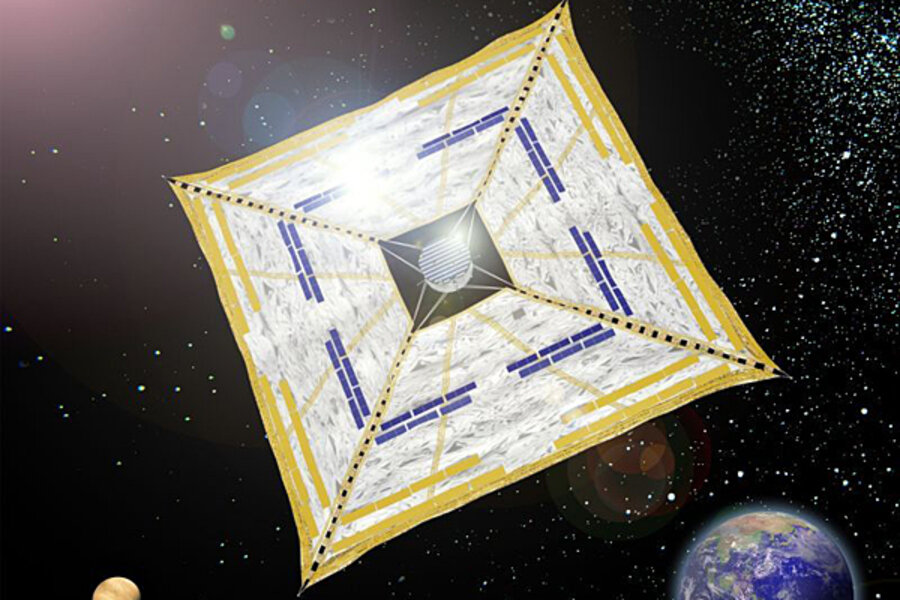Japanese solar sail successfully rides a sunbeam
Loading...
An unmanned probe riding a solar sail through space has felt its first accelerating push from sunlight in a successful test of its novel propulsion system, Japan's space agency has announced.
Observations of the Ikaros solar sail built by the Japan Aerospace Exploration Agency (JAXA) confirmed that the spacecraft has received a growing speed boost from light radiated by the sun, the space agency said.
"The small solar power sail demonstrator 'Ikaros,' which successfully deployed its solar sail, was confirmed to accelerate by [the] solar sail receiving solar pressure," JAXA officials said in a July 9 update. "This proved that the Ikaros has generated the biggest acceleration through photon during interplanetary flight in history."
IN PICTURES: Harnessing the sun's energy
The effect stems from the cumulative push of light photons striking the solar sail. When measured together, it adds up to a small continuous thrust that does not require fuel use by the Ikaros craft.
Sailing on light
JAXA engineers used Doppler radar measurements of the Ikaros craft to determine that sunlight is pressing on the probe's solar sail with a force of about 1.12 millinewtons (0.0002 pounds of force).
"This is a significant milestone on their flight – probably the next-to-last step before complete controlled solar sail flight is achieved (turning the spacecraft to add or subtract velocity in a controlled manner)," wrote Louis Freidman, co-founder of the California-based Planetary Society, in a message chronicling Ikaros' solar sailing success on the society's website.
The Ikaros spacecraft weighs nearly 700 pounds (315 kg) has thin film solar cells built into its kite-like frame to generate electricity.
The square-shaped Ikaros sail measures 46 feet (14 meters) wide and 66 feet (20 meters) diagonally. It is the first solar sail to actual fly on an interstellar mission.
Solar sail milestone
JAXA launched the solar sail Ikaros, short for Interplanetary Kite-craft Accelerated by Radiation Of the Sun, in May along with the Venus-bound orbiter Akatsuki (Japanese for "Dawn"). The Akatsuki orbit is due to arrive at Venus in December.
The Planetary Society has been working to fly its own solar sail to demonstrate the space propulsion technology, as have NASA engineers. The Planetary Society is currently developing its next effort – the LightSail 1 mission – using a spare NASA solar sail. JAXA officials hope to follow Ikaros with an even more ambitious solar sailing mission, as well.
Friedman said scientists have long-known that photons of light can push on spacecraft, but Ikaros is the first to attempt a true solar sailing flight.
"The acceleration by sunlight pressure on spacecraft has been known about ever since the beginning of the space age. It is, however, a new proof of engineering – harnessing the force of light pressure force to modify a sailcraft's path in a controlled way," Friedman wrote.
IN PICTURES: Harnessing the sun's energy





